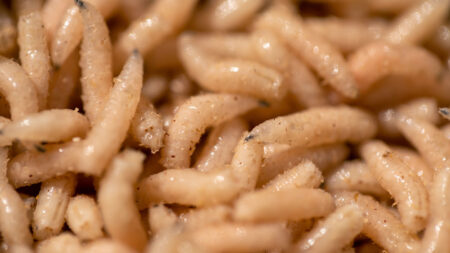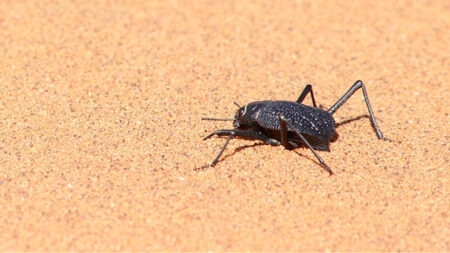Tornado-generating beaks and whirlpool-stirring feet help flamingos transform shallow waters into shrimp-swirling death zones — corralling agile prey with the flair of a Las Vegas stage act and the efficiency of a Dyson vacuum.
That’s the takeaway from a study published May 12 in the Proceedings of the National Academy of Sciences that combined high-speed video, fluid dynamics experiments and 3-D-printed flamingo parts to reveal the mechanics behind the birds’ underwater feeding frenzies.
Through a combination of head flicks, beak pulses, surface skimming and stomping footwork, the pink predators whip up vortices that drive tiny crustaceans straight toward their filtering beaks.
“They are filter-feeding machines,” says study author Víctor Ortega Jiménez, an animal biomechanics researcher at the University of California, Berkeley.
Creating vortices is rare among filter feeders in nature and fairly uncommon in human-made filtration technologies as well. The flamingo’s whole-body choreography thus showcases the power of evolutionary design and offers engineers an untapped strategy for improving how we separate particles from water, says Leandra Hamann, a biomimicry researcher at the University of Bonn in Germany who studies filtration systems.
“It looks like a good mechanism,” she says. “This is something engineers should seriously consider borrowing from nature.”
It was a family visit to the flamingo enclosure at his local zoo that first got Ortega Jiménez wondering what, exactly, all that head-bobbing and foot-shuffling was really doing. What looked like a clumsy ballet above the water, he suspected, might conceal a far more sophisticated hydraulic strategy below the surface.
Using clear-sided tanks designed for underwater filming, he and his colleagues recorded Chilean flamingoes (Phoenicopterus chilensis) from the Nashville Zoo as they dined on brine shrimp. A specialized camera, capable of capturing 500 frames per second, revealed what naturalists and zookeepers had missed for decades. With their heads inverted upside-down, the flamingoes snapped their beaks backward in quick bursts, generating tiny water twisters that sent sediment and prey swirling upwards.
But the head jerks are just the opening act. The birds add to the flow with rapid, rhythmic pulses of their L-shaped beaks — a motion that Ortega Jiménez calls “chattering.”
Like a sewing-machine needle pumping up and down about 12 times per second, this pistonlike action produces a steady upward jet of water, drawing food particles toward their mouths like miniature vacuum pumps. Inside the beak, the tongue then adds the final squeeze, pushing water through fine, comblike structures that trap shrimp and other edible morsels while flushing mud and silt back out.
To better understand the physics at play, Ortega Jiménez and his team built a 3D-printed model of a flamingo beak, and attached real beak bones from a deceased zoo bird to a simple motor. This allowed the team to recreate the flamingo’s signature mouth movements in the lab and explore how the birds, by skimming the water’s surface as they feed, generate additional swirling eddies that help funnel floating prey into their beaks.
“The sheer number of things happening simultaneously is almost overwhelming,” says Caitlin Kight, author of the book Flamingo and an education specialist at the University of Exeter in England who was not involved in the study.
And it doesn’t stop at the beak. The flamingo’s feet get in on the act, too.
Using an artificial foot model, the researchers demonstrated that, with each shimmy and sway, the webbed appendages fan open and snap shut like parachutes, churning up sediment and lifting hidden prey into the water column.
Computer modeling backed up these observations, confirming just how much the birds’ entire bodies — from feet to beak — work in concert to capture their prey.
“It all fits together like puzzle pieces,” says conservation biologist and flamingo specialist Felicity Arengo from the American Museum of Natural History in New York City. “All of these different anatomical and behavioral features are integrating and acting with each other to produce these vortices that are actually funneling the food to the mouth.”
Beyond the wow factor, study coauthor Saad Bhamla, a biophysicist at Georgia Tech in Atlanta, believes the research could inspire a new generation of filtration systems for everything from wastewater treatment to microplastics removal. He and a team of chemical engineers are already drawing on the flamingo’s chattering mechanics to design better water-desalination systems, using the beak’s pulsating motion to prevent waste buildup on filtration membranes — a cause source of clogs and high maintenance costs.
“I’m cautiously optimistic,” Bhamla says. If it works, flamingos — though better known for decorating lawns than advancing engineering — could become unlikely muses in the fight to improve water purification.
Read the full article here

















